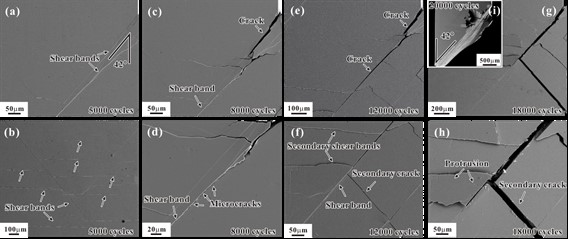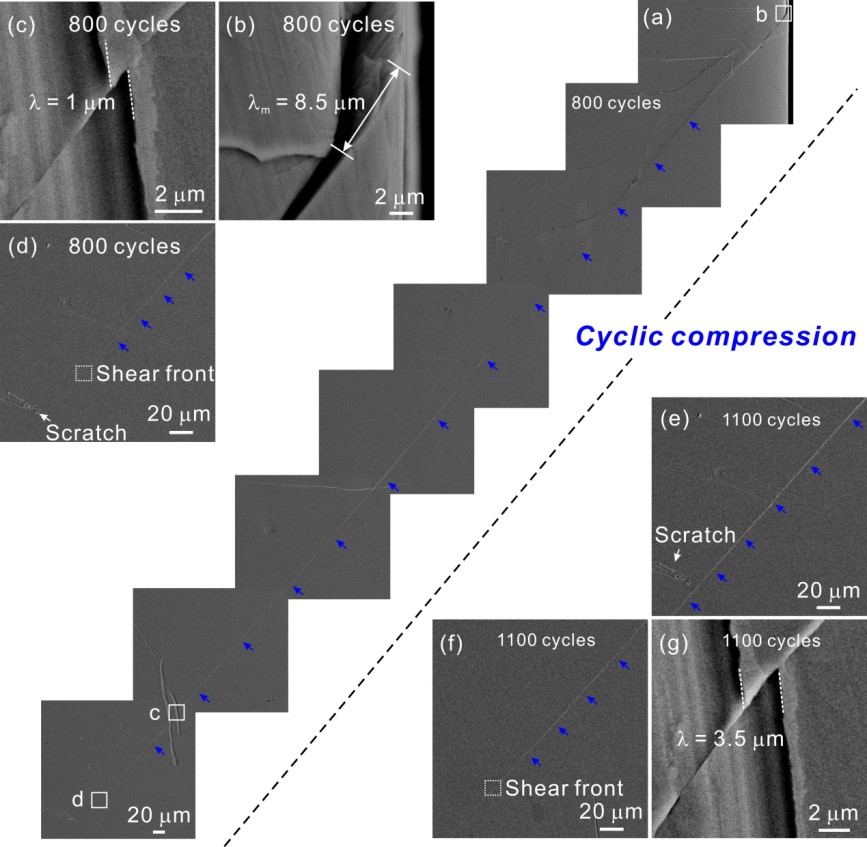Researchers
Position:Home首页 > Scientific Research > Researchers

Assistant Professor Xiao-Di WANG
Keywords:High-strength materials; Fatigue; Fracture
Contact:wangxiaodi@ustb.edu.cn
Researches
Dr. Xiaodi Wang graduated from the Institute of Metal Research (IMR), Chinese Academy of Sciences (CAS), with a PhD degree in 2018. Then he joined the Department of National Center for Materials Service Safety at the University of Science and Technology Beijing, as a post-doctoral researcher. His work is focused on the fatigue and fracture behaviors of metallic glasses (MGs). To date, he published ten papers in Scripta Materialia, Scientific Reports, Journal of Alloys and Compounds, etc.
l Main Projects
- Project 1:”National Natural Science Foundation of China”, “Deformation and fracture mechanisms of high-strength materials under notch tension at low temperature and/or high strain rates”, total fund 620000 RMB, 2018-2021, participator.
- Project 2:”National Natural Science Foundation of China”, “Critical conditions for shear deformation and fracture of metallic glasses under complex stress states”, total fund 250000 RMB, 2014-2016, participator.
- Project 3:”National Natural Science Foundation of China”, “Deformation and fracture behaviors of metallic glasses and their influencing factors”, total fund 200000 RMB, 2016-2018, participator.
l Main Contributions
- The evolution processes from shear banding to fatigue cracking and fracture in Zr52.5Cu17.9Ni14.6Al10Ti5 metallic glass were directly investigated by quasi-in situ cyclic compression-compression experiment. The results confirm that at high stress level fatigue crack initiated from and propagated along shear band. The mechanisms of fatigue cracking and fracture of the MGs can be readily clarified by the good correspondence between the stages of fatigue crack evolution on the sample surface and the regions on the fatigue fracture surface, i.e. the crack propagation region, the fast fracture region and the smooth region.

- In order to explore the effect of cyclic loading on the shear banding behavior, interrupted cyclic compression-compression experiments combined with scanning electron microscope observations using a typical Zr-based MG were performed. With increasing the number of loading cycles, shear bands firstly progressively propagate and eventually stop growing. In contrast to the apparent “work-hardening” behavior caused by the progressive propagation of shear band under monotonic loading, plastic softening occurs and then reaches saturation under cyclic compression. Such cyclic softening behavior is suggested to result from the production of excessive free volume in MGs, which decreases the critical stress for shear band initiation. These findings may improve the understanding on fatigue damage mechanisms and provide instructions for future design of MGs with excellent fatigue performance.

- A comprehensive understanding on the fatigue behavior of metallic glasses (MGs) is of vital importance for their structural applications. Here we present a systematic study on the fatigue damage and fracture behavior of a Zr52.5Cu17.9Ni14.6Al10Ti5 MG under cyclic compression of different stress levels, with the assistance of 3D X-ray tomography (XRT) and 2D scanning electron microscope to examine the origins of fatigue cracks. The results indicate that the fatigue fracture mode of the MG depends strongly on the stress level in such a manner similar to that of high-strength steels. The MG exhibits shear fracture along shear band under high cyclic stress level, just like the case for monotonic compression; under low cyclic stress level, in contrast, the fracture is dominated by splitting where the fatigue cracks originate from extrinsic defects. The increased propensity for cavitation and cracking under low stress level, as revealed by XRT, suggests a reduced resistance of the MG to cleavage failure which eventually leads to the transition of the fatigue fracture mode. The results support the idea that the fatigue performance of MGs can be improved by reducing the extrinsic defects and properly controlling the shear banding behavior.

l Publications
1. Wang, X. D., Qu, R. T., Wu, S. J., Liu, Z. Q., Zhang, Z. F., Fatigue damage and fracture behavior of metallic glass under cyclic compression. Mater. Sci. Eng. A, 717 (2018) 41-47.
2. Wang, X. D., Qu, R. T., Liu, Z. Q., Zhang, Z. F., Shear band-mediated fatigue cracking mechanism of metallic glass at high stress level. Mater. Sci. Eng. A, 627 (2015) 336-339.
3. Wang, X. D., Qu, R. T., Liu, Z. Q., Zhang, Z. F., Evolution of shear-band cracking in metallic glass under cyclic compression. Mater. Sci. Eng. A, 696 (2017) 267-272.
4. Wang, X. D., Qu, R. T., Liu, Z. Q., Zhang, Z. F., Shear band propagation and plastic softening of metallic glass under cyclic compression. J. Alloys Compd., 695 (2017) 2016-2022.
5. Wang, X. D., Qu, R. T., Wu, S. J., Duan, Q. Q., Liu, Z. Q., Zhu, Z. W., Zhang, H. F., Zhang, Z. F., Notch fatigue behavior: Metallic glass versus ultra-high strength steel. Sci. Rep., 6 (2016) 35557.
6. Wu, S. J., Wang, X. D., Lu, J. T., Qu, R. T., Zhang, Z. F., Room-tempera chanical properties of V20Nb20Mo20Ta20W20 high-entropy alloy. Adv. Eng. Mater., 20 (2018) 1800028.
7. Wu, S. J., Wang, X. D., Qu, R. T., Zhu, Z. W., Liu, Z. Q., Zhang, H. F., Zhang, Z. F., Gradual shear band cracking and apparent softening of metallic glass under low temperature compression. Intermetallics, 87 (2017) 45-54.
8. Qu, R. T., Wang, S. G., Wang, X. D., Liu, Z. Q., Zhang, Z. F., Revealing the shear band cracking mechanism in metallic glass by X-ray tomography. Scr. Mater., 133 (2017) 24-28.
9. Qu, R. T., Wang, S. G., Wang, X. D., Wu, S. J., Zhang, Z. F., Shear band fracture in metallic glass: Sample size effect. Mater. Sci. Eng. A, 739 (2019) 377-382.
10. Qu, R. T., Wang, S. G., Li, G. J., Wang, R. F., Wang, X. D., Wu, S. J., Zhang, Z. F., Shear band fracture in metallic glass: Hot or cold? Scr. Mater., 162 (2019) 136-140.
